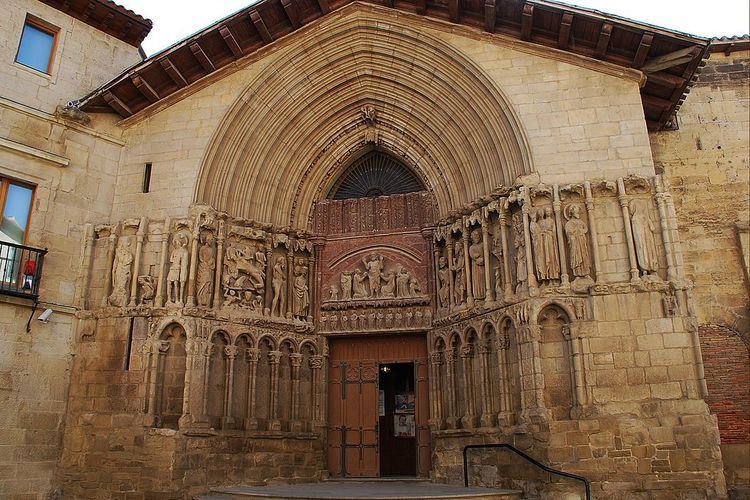Criteria Monument Reference no. RI-51-0000006 Phone +34 941 25 22 54 | Type Non-movable Designated 1866 Province La Rioja | |
 | ||
Similar Church of Santa María de, Co‑cathedral of Santa María de l, Casa de las Ciencias, Ontañón, Museo de La Rioja | ||
The Church of San Bartolomé (Spanish: Iglesia de San Bartolomé) is the oldest church of Logroño, Spain. Its construction dates back to the 12th century, so partly preserves Romanesque style in the head and in the initial part of the tower, and continues during the 13th century, with the Gothic style development, building the magnificent arched cover, which contains some Romanesque sculptures that tell the life of the saint and other Bible passages. The Church of San Bartholomé is located in the Landmark No. 9 in the Way of St. James. It is located 612 km from Santiago de Compostela. It was declared Bien de Interés Cultural in 1866.
Contents
Scenes from the porch
The scenes of the cover consist in 19 vignettes. If we start at the far right, in the first scene we see San Bartolomé saving the king Polemón's lunatic daughter, three tables, a man (1), a woman (2) and the Saint (3), the fourth is empty but could have been Polemón. In the second we see the saint in a painting (5) and a group of maidens in another (6), who are evangelizing in court. In the third, the Saint is expelling the demon from the pagan idols, and converting the rest, angering some priests. This part consists in the following tables, the priests (7), the idol Berith on a column and praying under (8) and the Saint with a box in hand expelling the devil (9). In the following two tables (10,11) we see how the Saint is led by a soldier to the king Astyages. On the far left might have been some scene, which may have been destroyed to build the Monesterio Palace. The twelfth box is empty. In tables 13-16 Bartholomew defeats the idol Baldach, who Astyages loves and making command him flogging for his anger, but orders pulling him to pieces because it seems insufficient punishment. We can see the him tied of the four limbs being skinned on a table holding by three female figures: lust, vanity and laziness. Tables 18 and 19 show San Bartolomé preaching with his own skin over his shoulder.
The tympanum of Cristo Redentor of the cover is moved down because in the 16th century stonemason Pedro de Acha reformed the chorus and makes a small window in order to illuminate the place. From this reform is also created the Renaissance arch behind this choir.
Structure
The basilica has three naves separated by octagonal pillars covered with a groin vault, highlighting the Romanesque crossing and apse, because there is not any altarpiece but it had a major altarpiece in its day, 18th-century style, painted in white and gold with great resemblance with the Holy Martyrs of Calahorra. During the fifteen day which Logroño resisted the siege of the French army in 1521, the tower was hit by enemy artillery suffering damage, because it is near the defensive walls of the city, and guarded the door Herbentia, near the old town hall . Years later it was rebuilt in brick, with Mudejar style influences from Aragón. During the First Carlist War it was located in the tower the optical telegraph.
Other uses and surroundings
During the confiscation, in the 19th century, was used as a warehouse for wood and coal. Furthermore disappeared all the works of art that could have except a carved stone Gothic coffins. He had other uses as military hospital, park or workshop. During mid-19th century was thought to demolish stone building in order to build a theater in the place that was the episcopal palace (currently in this place is located the food market).
Next to the church and even attached to it were built several buildings, some of which have been restored or demolished so now part of the apse is seen from the outside. Among those is the Palace of the Marquises of Monesterio, dating from 1751 and it was owned by the Marquis of Monesterio and Lapilla. Over the years it housed institutions like the Catholic Circle of Workers, schools and the cinema of the Father Marin and after years without any use, has been renovated and reused as official building.
